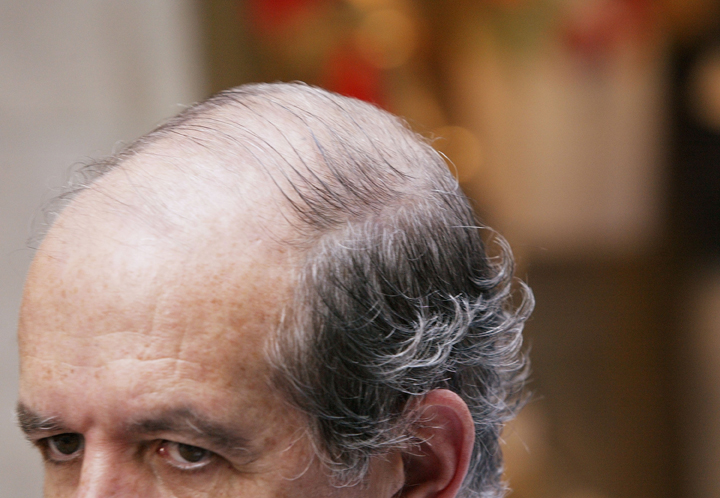TORONTO – New research is offering a glimmer of hope to men reaching for the Rogaine, wigs and hats. And the cure for baldness could be in using our own skin cells to regrow missing hair follicles.

A treatment is in the works at the University of Pennsylvania where researchers say they’re the first to use stem cells converted from human cells for regenerating missing and dying hair follicles.
So far, the method works on mice with thinning hair. The scientists took human skin cells and turned them into follicle-generating stem cells. Once they implanted, they helped in regenerating different cell types of human skin and hair follicles. The little mice even grew tiny hair shafts.
“This is the first time anyone has made scalable amounts of epithelial stem cells that are capable of generating the epithelial component of hair follicles,” lead researcher Dr. George Xu said in a statement.
He said that these cells can even be used for healing wounds, cosmetic use and hair regeneration.
READ MORE: How a father’s diet, lifestyle affect his baby’s healthy development
Turning to stem cells has been seen as a way to reverse hair loss but scientists have had trouble with generating a sufficient number of hair follicles.
In this case, the researchers started with human skin cells called dermal fibroblasts. They added three genes and converted those cells into stem cells called iPSCs. These these stem cells have the ability to turn into different cell types in the body.
- Capital gains changes are ‘really fair,’ Freeland says, as doctors cry foul
- Ontario doctors offer solutions to help address shortage of family physicians
- ‘Dangerous message’: Experts slam anti-sunscreen claims circulating online
- ‘Trying not to die’: Tourism operators loaded with debt despite rising demand
The iPSC cells were then converted into epithelial stem cells, which are normally found at the hair follicle. This last transformation is what’s key to hair growth.
If they carefully timed call growth, the researchers learned that they could create large numbers of these cells.
It may work on mice, but it hasn’t been scaled to humans. (It may not necessarily translate the same way in humans.)
READ MORE: How bacon and sausages are changing your sperm quality
Xu says his team’s next steps are to create a specific kind of adult stem cell called dermal papillae. They’re another type of cell found in hair and skin.
“When a person loses hair, they lose both types of cells,” Xu said.
“We have solved one major problem, the epithelial component of the hair follicle. We need to figure out a way to also make new dermal papillae cells, and no one has figured that part out yet,” he said.
READ MORE: Women are attracted to men with deep voices, but only for a fling: study
He told NBC that he hopes that within the next decade, his team will be able to unlock the creation of these dermal papillae cells. They’re vital in facilitating growth. Ultimately, both components could help researchers grow hair follicles in a research lab until they’re implanted into the patient.
Xu’s findings were published Tuesday night in the journal Nature Communications.
It’s normal to lose about 50 to 100 hairs every day, according to the American Academy of Dermatology.
But if you’re seeing bald patches or thinning, you could be experiencing hair loss, the organization says.
READ MORE: Beards aren’t attractive to women and scare other men away, study suggests
Stress, diseases and certain medical treatments could cause hair loss. Some women even notice hair loss after giving birth.
But hereditary hair loss may be the most common, the organization says.
carmen.chai@globalnews.ca
Follow @Carmen_Chai





Comments